https://docs.google.com/file/d/0Bx8YQfUokAbxeS1USjVCSlpCLTQ/edit?usp=sharing
Australia is derived from the Latin australis, meaning "southern". The country has been referred to colloquially as Oz since the early 20th century.[N 4] Aussie is a common colloquial term for "Australian". In neighbouring New Zealand the term "Aussie" is sometimes applied as a noun to the nation as well as its residents.[26]
Legends of Terra Australis Incognita—an "unknown land of the South"—date back to Roman times and were commonplace in medieval geography, although not based on any documented knowledge of the continent. Following European discovery, names for the Australian landmass were often references to the famed Terra Australis.
The earliest recorded use of the word Australia in English was in 1625 in "A note of Australia del Espíritu Santo, written by Sir Richard Hakluyt", published by Samuel Purchas in Hakluytus Posthumus, a corruption of the original Spanish name "Tierra Austral del Espíritu Santo" (Southern Land of the Holy Spirit)[27] for an island in Vanuatu.[28] The Dutch adjectival form Australische was used in a Dutch book in Batavia (Jakarta) in 1638, to refer to the newly discovered lands to the south.[29] Australia was later used in a 1693 translation of Les Aventures de Jacques Sadeur dans la Découverte et le Voyage de la Terre Australe, a 1676 French novel by Gabriel de Foigny, under the pen-name Jacques Sadeur.[30] Referring to the entire South Pacific region, Alexander Dalrymple used it in An Historical Collection of Voyages and Discoveries in the South Pacific Ocean in 1771. By the end of the 18th century, the name was being used to refer specifically to Australia, with the botanists George Shaw and Sir James Smith writing of "the vast island, or rather continent, of Australia, Australasia or New Holland" in their 1793 Zoology and Botany of New Holland,[31] and James Wilson including it on a 1799 chart.[32]
The name Australia was popularised by the explorer Matthew Flinders, who pushed for it to be formally adopted as early as 1804. When preparing his manuscript and charts for his 1814 A Voyage to Terra Australis, he was persuaded by his patron, Sir Joseph Banks, to use the term Terra Australis as this was the name most familiar to the public. Flinders did so, and published the following rationale:
The first time that the name Australia appears to have been officially used was in a despatch to Lord Bathurst of 4 April 1817 in which Governor Lachlan Macquarie acknowledges the receipt of Capt. Flinders' charts of Australia.[38] On 12 December 1817, Macquarie recommended to the Colonial Office that it be formally adopted.[39] In 1824, the Admiralty agreed that the continent should be known officially as Australia.[40]
The first map on which the word Australia occurs was published in St Petersburg in 1824. It is in Krusenstern's Atlas de l'Océan Pacifique.[41]

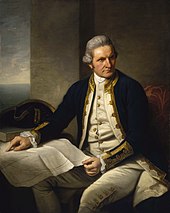
Human habitation of the Australian continent is estimated to have begun between 42,000 and 48,000 years ago,[42] possibly with the migration of people by land bridges and short sea-crossings from what is now South-East Asia. These first inhabitants may have been ancestors of modern Indigenous Australians.[43] At the time of European settlement in the late 18th century, most Indigenous Australians were hunter-gatherers, with a complex oral culture and spiritual values based on reverence for the land and a belief in the Dreamtime. The Torres Strait Islanders, ethnically Melanesian, were originally horticulturalists and hunter-gatherers.[44] The northern coasts and waters of Australia were visited sporadically by fishermen from Maritime Southeast Asia.[45]
The first recorded European sighting of the Australian mainland, and the first recorded European landfall on the Australian continent, are attributed to the Dutch navigator Willem Janszoon. He sighted the coast of Cape York Peninsula in early 1606, and made landfall on 26 February at the Pennefather River near the modern town of Weipa on Cape York.[46] The Dutch charted the whole of the western and northern coastlines and named the island continent "New Holland" during the 17th century, but made no attempt at settlement.[46] William Dampier, an English explorer and privateer, landed on the north-west coast of New Holland in 1688 and again in 1699 on a return trip.[47] In 1770, James Cook sailed along and mapped the east coast, which he named New South Wales and claimed for Great Britain.[48] With the loss of its American colonies in 1780, the British Government sent a fleet of ships, the "First Fleet", under the command of Captain Arthur Phillip, to establish a new penal colony in New South Wales. A camp was set up and the flag raised at Sydney Cove, Port Jackson, on 26 January 1788,[15] a date which became Australia's national day, Australia Day although the British Crown Colony of New South Wales was not formally promulgated until 7 February 1788. The first settlement led to the foundation of Sydney, the establishment of farming, industry and commerce; and the exploration and settlement of other regions.
Van Diemen's Land, now known as Tasmania, was settled in 1803 and became a separate colony in 1825.[49] The United Kingdom formally claimed the western part of Western Australia (the Swan River Colony) in 1828.[50] Separate colonies were carved from parts of New South Wales: South Australia in 1836, Victoria in 1851, and Queensland in 1859.[51] The Northern Territory was founded in 1911 when it was excised from South Australia.[52] South Australia was founded as a "free province"—it was never a penal colony.[53] Victoria and Western Australia were also founded "free", but later accepted transported convicts.[54][55] A campaign by the settlers of New South Wales led to the end of convict transportation to that colony; the last convict ship arrived in 1848.[56]
The indigenous population, estimated to have been between 750,000 and 1,000,000 at the time European settlement began,[57] declined for 150 years following settlement, mainly due to infectious disease.[58] A government policy of "assimilation" beginning with the Aboriginal Protection Act 1869 resulted in the removal of many Aboriginal children from their families and communities—often referred to as the Stolen Generations—a practice which may also have contributed to the decline in the indigenous population.[59] The Federal government gained the power to make laws with respect to Aborigines following the 1967 referendum.[60] Traditional ownership of land—aboriginal title—was not recognised until 1992, when the High Court case Mabo v Queensland (No 2)' overturned the legal doctrine that Australia had been terra nullius ("land belonging to no one") before the European occupation.[61]
A gold rush began in Australia in the early 1850s[62] and the Eureka Rebellion against mining licence fees in 1854 was an early expression of civil disobedience.[63] Between 1855 and 1890, the six colonies individually gained responsible government, managing most of their own affairs while remaining part of the British Empire.[64] The Colonial Office in London retained control of some matters, notably foreign affairs,[65] defence,[66] and international shipping.
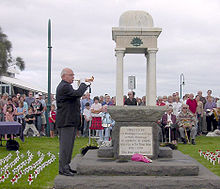
On 1 January 1901, federation of the colonies was achieved after a decade of planning, consultation and voting.[67] The Commonwealth of Australia was established and it became a dominion of the British Empire in 1907. The Federal Capital Territory (later renamed the Australian Capital Territory) was formed in 1911 as the location for the future federal capital of Canberra. Melbourne was the temporary seat of government from 1901 to 1927 while Canberra was being constructed.[68] The Northern Territory was transferred from the control of the South Australian government to the federal parliament in 1911.[69] In 1914, Australia joined Britain in fighting World War I, with support from both the outgoing Commonwealth Liberal Party and the incoming Australian Labor Party.[70] Australians took part in many of the major battles fought on the Western Front.[71] Of about 416,000 who served, about 60,000 were killed and another 152,000 were wounded.[72] Many Australians regard the defeat of the Australian and New Zealand Army Corps (ANZACs) at Gallipoli as the birth of the nation—its first major military action.[73][74] The Kokoda Track campaign is regarded by many as an analogous nation-defining event during World War II.[75]
Britain's Statute of Westminster 1931 formally ended most of the constitutional links between Australia and the UK. Australia adopted it in 1942,[76] but it was backdated to 1939 to confirm the validity of legislation passed by the Australian Parliament during World War II.[77][78] The shock of the United Kingdom's defeat in Asia in 1942 and the threat of Japanese invasion caused Australia to turn to the United States as a new ally and protector.[79] Since 1951, Australia has been a formal military ally of the US, under the ANZUS treaty.[80] After World War II Australia encouraged immigration from Europe. Since the 1970s and following the abolition of the White Australia policy, immigration from Asia and elsewhere was also promoted.[81] As a result, Australia's demography, culture, and self-image were transformed.[82] The final constitutional ties between Australia and the UK were severed with the passing of the Australia Act 1986, ending any British role in the government of the Australian States, and closing the option of judicial appeals to the Privy Council in London.[83] In a 1999 referendum, 55 per cent of voters and a majority in every state rejected a proposal to become a republic with a president appointed by a two-thirds vote in both Houses of the Australian Parliament. Since the election of the Whitlam Government in 1972,[84] there has been an increasing focus in foreign policy on ties with other Pacific Rim nations, while maintaining close ties with Australia's traditional allies and trading partners.[85]
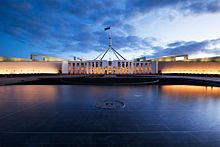
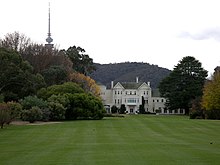
Australia is a constitutional monarchy with a federal division of powers. It uses a parliamentary system of government with Queen Elizabeth II at its apex as the Queen of Australia, a role that is distinct from her position as monarch of the other Commonwealth realms. The Queen resides in the United Kingdom, and she is represented by her viceroys in Australia (the Governor-General at the federal level and by the Governors at the state level), who by convention act on the advice of her ministers. Supreme executive authority is vested by the Constitution of Australia in the sovereign, but the power to exercise it is conferred by the Constitution specifically on the Governor-General.[86][87] The most notable exercise to date of the Governor-General's reserve powers outside the Prime Minister's request was the dismissal of the Whitlam Government in the constitutional crisis of 1975.[88]
The federal government is separated into three branches:
Australia's electoral system uses preferential voting for all lower house elections with the exception of Tasmania and the ACT which, along with the Senate and most state upper houses, combine it with proportional representation in a system known as the single transferable vote. Voting is compulsory for all enrolled citizens 18 years and over in every jurisdiction,[93] as is enrolment (with the exception of South Australia).[94] The party with majority support in the House of Representatives forms the government and its leader becomes Prime Minister. In cases where no party has majority support, the Governor-General has the power to appoint the Prime Minister and, if necessary, dismiss one that has lost the confidence of Parliament.[95]
There are two major political groups that usually form government, federally and in the states: the Australian Labor Party and the Coalition which is a formal grouping of the Liberal Party and its minor partner, the National Party.[96][97] Independent members and several minor parties have achieved representation in Australian parliaments, mostly in upper houses.
Within Australian political culture, the Coalition is considered centre-right and the Labor Party is considered centre-left. Queensland in particular, along with Western Australia and the Northern Territory, are regarded as comparatively conservative.[98][99][100][101][102][103] Victoria, South Australia, Tasmania, and the Australian Capital Territory are regarded as comparatively socially liberal.[103][104][105][106] New South Wales has often been regarded as a politically moderate bellwether state.[103][106]
Following a partyroom leadership challenge, Julia Gillard became the first female Prime Minister in June 2010.[107] The most recent federal election was held on 21 August 2010 and resulted in the first hung parliament in over 50 years. Gillard was able to form a minority Labor government with the support of independents.
Each state and major mainland territory has its own parliament—unicameral in the Northern Territory, the ACT and Queensland—and bicameral in the other states. The states are sovereign entities, although subject to certain powers of the Commonwealth as defined by the Constitution. The lower houses are known as the Legislative Assembly (the House of Assembly in South Australia and Tasmania); the upper houses are known as the Legislative Council. The head of the government in each state is the Premier and in each territory the Chief Minister. The Queen is represented in each state by a Governor; and in the Northern Territory, the Administrator.[109] In the Commonwealth, the Queen's representative is the Governor-General.[110]
The federal parliament directly administers the following territories:[89]

Australia has pursued the cause of international trade liberalisation.[113][114][115] It led the formation of the Cairns Group and Asia-Pacific Economic Cooperation.[116][117] Australia is a member of the Organisation for Economic Co-operation and Development and the World Trade Organization,[118][119] and has pursued several major bilateral free trade agreements, most recently the Australia – United States Free Trade Agreement[120] and Closer Economic Relations with New Zealand,[121] with another free trade agreement being negotiated with China—the Australia–China Free Trade Agreement—and Japan,[122] South Korea in 2011,[123][124] Australia–Chile Free Trade Agreement, ASEAN – Australia – New Zealand Free Trade Area, and the Trans-Pacific Strategic Economic Partnership.
Along with New Zealand, the United Kingdom, Malaysia and Singapore, Australia is party to the Five Power Defence Arrangements, a regional defence agreement. A founding member country of the United Nations, Australia is strongly committed to multilateralism[125] and maintains an international aid program under which some 60 countries receive assistance. The 2005–06 budget provides A$2.5 billion for development assistance.[126] Australia ranks seventh overall in the Center for Global Development's 2008 Commitment to Development Index.[127]
Australia's armed forces—the Australian Defence Force (ADF)—comprise the Royal Australian Navy (RAN), the Australian Army and the Royal Australian Air Force (RAAF), in total numbering 80,561 personnel (including 55,068 regulars and 25,493 reservists).[128] The titular role of Commander-in-Chief is vested in the Governor-General, who appoints a Chief of the Defence Force from one of the armed services on the advice of the government.[129] Day-to-day force operations are under the command of the Chief, while broader administration and the formulation of defence policy is undertaken by the Minister and Department of Defence.
In the 2010–11 budget, defence spending was A$25.7 billion,[130] representing the 13th largest defence budget.[131] Australia has been involved in UN and regional peacekeeping, disaster relief and armed conflict; it currently has deployed approximately 3,330 defence force personnel in varying capacities to 12 international operations in areas including East Timor, Solomon Islands and Afghanistan.[132]
Australia's landmass of 7,617,930 square kilometres (2,941,300 sq mi)[133] is on the Indo-Australian Plate. Surrounded by the Indian and Pacific oceans,[N 5] it is separated from Asia by the Arafura and Timor seas, with the Coral Sea lying off the Queensland coast, and the Tasman Sea lying between Australia and New Zealand. The world's smallest continent[135] and sixth largest country by total area,[136] Australia—owing to its size and isolation—is often dubbed the "island continent",[137] and is sometimes considered the world's largest island.[138] Australia has 34,218 kilometres (21,262 mi) of coastline (excluding all offshore islands),[139] and claims an extensive Exclusive Economic Zone of 8,148,250 square kilometres (3,146,060 sq mi). This exclusive economic zone does not include the Australian Antarctic Territory.[140] Excluding Macquarie Island, Australia lies between latitudes 9° and 44°S, and longitudes 112° and 154°E.
The Great Barrier Reef, the world's largest coral reef,[141] lies a short distance off the north-east coast and extends for over 2,000 kilometres (1,240 mi). Mount Augustus, claimed to be the world's largest monolith,[142] is located in Western Australia. At 2,228 metres (7,310 ft), Mount Kosciuszko on the Great Dividing Range is the highest mountain on the Australian mainland. Even taller are Mawson Peak (at 2,745 metres or 9,006 feet), on the remote Australian territory of Heard Island, and, in the Australian Antarctic Territory, Mount McClintock and Mount Menzies, at 3,492 metres (11,457 ft) and 3,355 metres (11,007 ft) respectively.[143]
Australia's size gives it a wide variety of landscapes, with subtropical rain forests in the north-east, mountain ranges in the south-east, south-west and east, and dry desert in the centre.[144] It is the flattest continent,[145] with the oldest and least fertile soils;[146][147] desert or semi-arid land commonly known as the outback makes up by far the largest portion of land.[148] The driest inhabited continent, only its south-east and south-west corners have a temperate climate.[149] The population density, 2.8 inhabitants per square kilometre, is among the lowest in the world,[150] although a large proportion of the population lives along the temperate south-eastern coastline.[151]
Eastern Australia is marked by the Great Dividing Range, which runs parallel to the coast of Queensland, New South Wales and much of Victoria. The name is not strictly accurate, because parts of the range consist of low hills, and the highlands are typically no more than 1,600 metres (5,249 ft) in height.[152] The coastal uplands and a belt of Brigalow grasslands lie between the coast and the mountains, while inland of the dividing range are large areas of grassland.[152][153] These include the western plains of New South Wales, and the Einasleigh Uplands, Barkly Tableland, and Mulga Lands of inland Queensland. The northernmost point of the east coast is the tropical-rainforested Cape York Peninsula.[154][155][156][157]
The landscapes of the northern part of the country—the Top End and the Gulf Country behind the Gulf of Carpentaria, with their tropical climate—consist of woodland, grassland, and desert.[158][159][160] At the north-west corner of the continent are the sandstone cliffs and gorges of The Kimberley, and below that the Pilbara. To the south of these and inland, lie more areas of grassland: the Ord Victoria Plain and the Western Australian Mulga shrublands.[161][162][163] At the heart of the country are the uplands of central Australia; prominent features of the centre and south include the inland Simpson, Tirari and Sturt Stony, Gibson, Great Sandy, Tanami, and Great Victoria deserts, with the famous Nullarbor Plain on the southern coast.[164][165][166][167]
The climate of Australia is significantly influenced by ocean currents, including the Indian Ocean Dipole and the El Niño–Southern Oscillation, which is correlated with periodic drought, and the seasonal tropical low-pressure system that produces cyclones in northern Australia.[168][169] These factors cause rainfall to vary markedly from year to year. Much of the northern part of the country has a tropical, predominantly summer-rainfall (monsoon) climate.[170] The southwest corner of the country has a Mediterranean climate.[171] Much of the southeast (including Tasmania) is temperate.[170]
Australian forests are mostly made up of evergreen species, particularly eucalyptus trees in the less arid regions, wattles replace them in drier regions and deserts as the most dominant species.[175] Among well-known Australian animals are the monotremes (the platypus and echidna); a host of marsupials, including the kangaroo, koala, and wombat, and birds such as the emu and the kookaburra.[175] Australia is home to many dangerous animals including some of the most venomous snakes in the world.[176] The dingo was introduced by Austronesian people who traded with Indigenous Australians around 3000 BCE.[177] Many animal and plant species became extinct soon after first human settlement,[178] including the Australian megafauna; others have disappeared since European settlement, among them the thylacine.[179][180]
Many of Australia's ecoregions, and the species within those regions, are threatened by human activities and introduced animal, chromistan, fungal and plant species.[181] The federal Environment Protection and Biodiversity Conservation Act 1999 is the legal framework for the protection of threatened species.[182] Numerous protected areas have been created under the National Strategy for the Conservation of Australia's Biological Diversity to protect and preserve unique ecosystems;[183][184] 65 wetlands are listed under the Ramsar Convention,[185] and 16 natural World Heritage Sites have been established.[186] Australia was ranked 51st of 163 countries in the world on the 2010 Environmental Performance Index.[187]
Climate change has become an increasing concern in Australia in recent years, and protection of the environment is a major political issue.[188][189] In 2007, the Rudd Government signed the instrument of ratification of the Kyoto Protocol. Nevertheless, Australia's carbon dioxide emissions per capita are among the highest in the world, lower than those of only a few other industrialised nations.[190] Rainfall in Australia has slightly increased over the past century, both nationwide and for two quadrants of the nation,[191] According to the Bureau of Meteorology's 2011 Australian Climate Statement, Australia had lower than average temperatures in 2011 as a consequence of a La Niña weather pattern, however, "the country's 10-year average continues to demonstrate the rising trend in temperatures, with 2002–2011 likely to rank in the top two warmest 10-year periods on record for Australia, at 0.52 °C above the long-term average".[192] Water restrictions are frequently in place in many regions and cities of Australia in response to chronic shortages due to urban population increases and localised drought.[193][194] Throughout much of the continent, major flooding regularly follows extended periods of drought, flushing out inland river systems, overflowing dams and inundating large inland flood plains, as occurred throughout Eastern Australia in 2010, 2011 and 2012 after the 2000s Australian drought.
Australia is a wealthy country[196][197][198] with a market economy, a relatively high GDP per capita, and a relatively low rate of poverty. The Australian dollar is the currency for the nation, including Christmas Island, Cocos (Keeling) Islands, and Norfolk Island, as well as the independent Pacific Island states of Kiribati, Nauru, and Tuvalu. With the 2006 merger of the Australian Stock Exchange and the Sydney Futures Exchange, the Australian Securities Exchange became the ninth largest in the world.[199]
Ranked third in the Index of Economic Freedom (2010),[200] Australia is the world's thirteenth largest economy and has the fifth highest per capita GDP (nominal) at $66,984. The country was ranked second in the United Nations 2011 Human Development Index and first in Legatum's 2008 Prosperity Index.[201] All of Australia's major cities fare well in global comparative livability surveys;[202] Melbourne reached first place on The Economist's 2011 and 2012 world's most livable cities lists, followed by Sydney, Perth, and Adelaide in sixth, eighth, and ninth place respectively.[203] Total government debt in Australia is about $190 billion[204] – 20 per cent of GDP in 2010.[205] Australia has among the highest house prices and some of the highest household-debt levels in the world.[206]
An emphasis on exporting commodities rather than manufactured goods has underpinned a significant increase in Australia's terms of trade since the start of the 21st century, due to rising commodity prices. Australia has a balance of payments that is more than 7 per cent of GDP negative, and has had persistently large current account deficits for more than 50 years.[208] Australia has grown at an average annual rate of 3.6 per cent for over 15 years, in comparison to the OECD annual average of 2.5 per cent.[208] Australia was the only advanced economy not to experience a recession due to the global financial downturn in 2008–2009.[209] However, the economies of six of Australia's major trading partners have been in recession, which in turn has affected Australia, significantly hampering its economic growth in recent years.[210][211] From 2012 to early 2013, Australia's national economy grew, but some non-mining states and Australia's non-mining economy experienced a recession.[212][213][214][215]
The Hawke Government floated the Australian dollar in 1983 and partially deregulated the financial system.[216] The Howard Government followed with a partial deregulation of the labour market and the further privatisation of state-owned businesses, most notably in the telecommunications industry.[217] The indirect tax system was substantially changed in July 2000 with the introduction of a 10 per cent Goods and Services Tax (GST).[218] In Australia's tax system, personal and company income tax are the main sources of government revenue.[219]
In May 2012, there were 11,537,900 people employed (either full- or part-time), with an unemployment rate of 5.1 per cent.[220] Youth unemployment (15–24) stood at 11.2 per cent.[220]
Over the past decade, inflation has typically been 2–3 per cent and the base interest rate 5–6 per cent. The service sector of the economy, including tourism, education, and financial services, accounts for about 70 per cent of GDP.[221] Rich in natural resources, Australia is a major exporter of agricultural products, particularly wheat and wool, minerals such as iron-ore and gold, and energy in the forms of liquified natural gas and coal. Although agriculture and natural resources account for only 3 per cent and 5 per cent of GDP respectively, they contribute substantially to export performance. Australia's largest export markets are Japan, China, the US, South Korea, and New Zealand.[222] Australia is the world's fourth largest exporter of wine, and the wine industry contributes $5.5 billion per year to the nation's economy.[223]

For almost two centuries the majority of settlers, and later immigrants, came from the British Isles. As a result the people of Australia are primarily of British and/or Irish ethnic origin. The 2011 Census asked respondents to provide a maximum of two ancestries with which they most closely identify. The most commonly nominated ancestry was English (36.1 per cent), followed by Australian (35.4 per cent),[225] Irish (10.4 per cent), Scottish (8.9 per cent), Italian (4.6 per cent), German (4.5 per cent), Chinese (4.3 per cent), Indian (2.0 per cent), Greek (1.9 per cent), and Dutch (1.7 per cent).[226] Asian Australians make up 12% of the population.[227]
Australia's population has quadrupled since the end of World War I.[228] Nevertheless, its population density, 2.8 inhabitants per square kilometre, remains among the lowest in the world.[150] Much of the population increase came from immigration. Following World War II and through to 2000, almost 5.9 million of the total population settled in the country as new immigrants, meaning that nearly two out of every seven Australians were born in another country.[229] Most immigrants are skilled,[230] but the immigration quota includes categories for family members and refugees.[230] By 2050, Australia's population is currently projected to reach around 42 million.[231]
In 2011, 24.6% of Australians were born elsewhere and 43.1% of people had at least one overseas-born parent;[232] the largest immigrant groups were those from the United Kingdom, New Zealand, China, India, Italy, Vietnam, and Philippines.[233]
Over 80 percent of Australia's population is of European ancestry, and most of the rest are of Asian heritage, with a smaller minority of indigenous (Aboriginal) background. Following the abolition of the White Australia policy in 1973, numerous government initiatives have been established to encourage and promote racial harmony based on a policy of multiculturalism.[234] In 2005–06, more than 131,000 people emigrated to Australia, mainly from Asia and Oceania.[235] The migration target for 2012–13 is 190,000,[236] compared to 67,900 in 1998–99.[237]
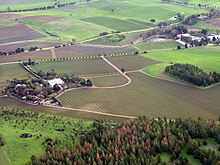
The Indigenous population—mainland Aborigines and Torres Strait Islanders—was counted at 548,370 (2.5 per cent of the total population) in 2011,[238] a significant increase from 115,953 in the 1976 census.[239] The increase is partly due to the fact that previously, many people with Indigenous heritage were overlooked by the census due to undercount and cases where their Indigenous status had not been recorded on the form.
Indigenous Australians experience higher than average rates of imprisonment and unemployment,[240] lower levels of education, and life expectancies for males and females that are 11–17 years lower than those of non-indigenous Australians.[222][241][242] Some remote Indigenous communities have been described as having "failed state"-like conditions.[243][244][245][246][247]
In common with many other developed countries, Australia is experiencing a demographic shift towards an older population, with more retirees and fewer people of working age. In 2004, the average age of the civilian population was 38.8 years.[248] A large number of Australians (759,849 for the period 2002–03;[249] 1 million or 5% of the total population in 2005[250]) live outside their home country.
Australia is derived from the Latin australis, meaning "southern". The country has been referred to colloquially as Oz since the early 20th century.[N 4] Aussie is a common colloquial term for "Australian". In neighbouring New Zealand the term "Aussie" is sometimes applied as a noun to the nation as well as its residents.[26]
Legends of Terra Australis Incognita—an "unknown land of the South"—date back to Roman times and were commonplace in medieval geography, although not based on any documented knowledge of the continent. Following European discovery, names for the Australian landmass were often references to the famed Terra Australis.
The earliest recorded use of the word Australia in English was in 1625 in "A note of Australia del Espíritu Santo, written by Sir Richard Hakluyt", published by Samuel Purchas in Hakluytus Posthumus, a corruption of the original Spanish name "Tierra Austral del Espíritu Santo" (Southern Land of the Holy Spirit)[27] for an island in Vanuatu.[28] The Dutch adjectival form Australische was used in a Dutch book in Batavia (Jakarta) in 1638, to refer to the newly discovered lands to the south.[29] Australia was later used in a 1693 translation of Les Aventures de Jacques Sadeur dans la Découverte et le Voyage de la Terre Australe, a 1676 French novel by Gabriel de Foigny, under the pen-name Jacques Sadeur.[30] Referring to the entire South Pacific region, Alexander Dalrymple used it in An Historical Collection of Voyages and Discoveries in the South Pacific Ocean in 1771. By the end of the 18th century, the name was being used to refer specifically to Australia, with the botanists George Shaw and Sir James Smith writing of "the vast island, or rather continent, of Australia, Australasia or New Holland" in their 1793 Zoology and Botany of New Holland,[31] and James Wilson including it on a 1799 chart.[32]
The name Australia was popularised by the explorer Matthew Flinders, who pushed for it to be formally adopted as early as 1804. When preparing his manuscript and charts for his 1814 A Voyage to Terra Australis, he was persuaded by his patron, Sir Joseph Banks, to use the term Terra Australis as this was the name most familiar to the public. Flinders did so, and published the following rationale:
In the footnote Flinders wrote:There is no probability, that any other detached body of land, of nearly equal extent, will ever be found in a more southern latitude; the name Terra Australis will, therefore, remain descriptive of the geographical importance of this country, and of its situation on the globe: it has antiquity to recommend it; and, having no reference to either of the two claiming nations, appears to be less objectionable than any other which could have been selected.*[33]
This is the only occurrence of the word Australia in that text; but in Appendix III, Robert Brown's General remarks, geographical and systematical, on the botany of Terra Australis, Brown makes use of the adjectival form Australian throughout,[35]—the first known use of that form.[36] Despite popular conception, the book was not instrumental in the adoption of the name: the name came gradually to be accepted over the following ten years.[37]* Had I permitted myself any innovation on the original term, it would have been to convert it to AUSTRALIA; as being more agreeable to the ear, and an assimilation to the names of the other great portions of the earth.[34]
The first time that the name Australia appears to have been officially used was in a despatch to Lord Bathurst of 4 April 1817 in which Governor Lachlan Macquarie acknowledges the receipt of Capt. Flinders' charts of Australia.[38] On 12 December 1817, Macquarie recommended to the Colonial Office that it be formally adopted.[39] In 1824, the Admiralty agreed that the continent should be known officially as Australia.[40]
The first map on which the word Australia occurs was published in St Petersburg in 1824. It is in Krusenstern's Atlas de l'Océan Pacifique.[41]
History
Main article: History of Australia

Exploration of what was then New Holland by Europeans until 1812
1606 Willem Janszoon
1606 Luis Váez de Torres
1616 Dirk Hartog
1619 Frederick de Houtman
1644 Abel Tasman
1696 Willem de Vlamingh
1699 William Dampier
1770 James Cook
1797–1799 George Bass
1801–1803 Matthew Flinders

Portrait of Captain James Cook, the first European to achieve contact with the eastern coastline of Australia in 1770.
The first recorded European sighting of the Australian mainland, and the first recorded European landfall on the Australian continent, are attributed to the Dutch navigator Willem Janszoon. He sighted the coast of Cape York Peninsula in early 1606, and made landfall on 26 February at the Pennefather River near the modern town of Weipa on Cape York.[46] The Dutch charted the whole of the western and northern coastlines and named the island continent "New Holland" during the 17th century, but made no attempt at settlement.[46] William Dampier, an English explorer and privateer, landed on the north-west coast of New Holland in 1688 and again in 1699 on a return trip.[47] In 1770, James Cook sailed along and mapped the east coast, which he named New South Wales and claimed for Great Britain.[48] With the loss of its American colonies in 1780, the British Government sent a fleet of ships, the "First Fleet", under the command of Captain Arthur Phillip, to establish a new penal colony in New South Wales. A camp was set up and the flag raised at Sydney Cove, Port Jackson, on 26 January 1788,[15] a date which became Australia's national day, Australia Day although the British Crown Colony of New South Wales was not formally promulgated until 7 February 1788. The first settlement led to the foundation of Sydney, the establishment of farming, industry and commerce; and the exploration and settlement of other regions.
Van Diemen's Land, now known as Tasmania, was settled in 1803 and became a separate colony in 1825.[49] The United Kingdom formally claimed the western part of Western Australia (the Swan River Colony) in 1828.[50] Separate colonies were carved from parts of New South Wales: South Australia in 1836, Victoria in 1851, and Queensland in 1859.[51] The Northern Territory was founded in 1911 when it was excised from South Australia.[52] South Australia was founded as a "free province"—it was never a penal colony.[53] Victoria and Western Australia were also founded "free", but later accepted transported convicts.[54][55] A campaign by the settlers of New South Wales led to the end of convict transportation to that colony; the last convict ship arrived in 1848.[56]
A gold rush began in Australia in the early 1850s[62] and the Eureka Rebellion against mining licence fees in 1854 was an early expression of civil disobedience.[63] Between 1855 and 1890, the six colonies individually gained responsible government, managing most of their own affairs while remaining part of the British Empire.[64] The Colonial Office in London retained control of some matters, notably foreign affairs,[65] defence,[66] and international shipping.

The Last Post is played at an Anzac Day ceremony in Port Melbourne, Victoria. Similar ceremonies are held in most suburbs and towns.
Britain's Statute of Westminster 1931 formally ended most of the constitutional links between Australia and the UK. Australia adopted it in 1942,[76] but it was backdated to 1939 to confirm the validity of legislation passed by the Australian Parliament during World War II.[77][78] The shock of the United Kingdom's defeat in Asia in 1942 and the threat of Japanese invasion caused Australia to turn to the United States as a new ally and protector.[79] Since 1951, Australia has been a formal military ally of the US, under the ANZUS treaty.[80] After World War II Australia encouraged immigration from Europe. Since the 1970s and following the abolition of the White Australia policy, immigration from Asia and elsewhere was also promoted.[81] As a result, Australia's demography, culture, and self-image were transformed.[82] The final constitutional ties between Australia and the UK were severed with the passing of the Australia Act 1986, ending any British role in the government of the Australian States, and closing the option of judicial appeals to the Privy Council in London.[83] In a 1999 referendum, 55 per cent of voters and a majority in every state rejected a proposal to become a republic with a president appointed by a two-thirds vote in both Houses of the Australian Parliament. Since the election of the Whitlam Government in 1972,[84] there has been an increasing focus in foreign policy on ties with other Pacific Rim nations, while maintaining close ties with Australia's traditional allies and trading partners.[85]
Government
Main articles: Government of Australia, Politics of Australia, and Monarchy of Australia

Parliament House, Canberra was opened in 1988, replacing the provisional Parliament House building opened in 1927.

Government House, Canberra, also known as "Yarralumla", is the official residence of the Governor-General.
The federal government is separated into three branches:
- The legislature: the bicameral Parliament, defined in section 1 of the constitution as comprising the Queen (represented by the Governor-General), the Senate, and the House of Representatives;
- The executive: the Federal Executive Council, in practice the Governor-General as advised by the Prime Minister and Ministers of State;[89]
- The judiciary: the High Court of Australia and other federal courts, whose judges are appointed by the Governor-General on advice of the Council.
Australia's electoral system uses preferential voting for all lower house elections with the exception of Tasmania and the ACT which, along with the Senate and most state upper houses, combine it with proportional representation in a system known as the single transferable vote. Voting is compulsory for all enrolled citizens 18 years and over in every jurisdiction,[93] as is enrolment (with the exception of South Australia).[94] The party with majority support in the House of Representatives forms the government and its leader becomes Prime Minister. In cases where no party has majority support, the Governor-General has the power to appoint the Prime Minister and, if necessary, dismiss one that has lost the confidence of Parliament.[95]
There are two major political groups that usually form government, federally and in the states: the Australian Labor Party and the Coalition which is a formal grouping of the Liberal Party and its minor partner, the National Party.[96][97] Independent members and several minor parties have achieved representation in Australian parliaments, mostly in upper houses.
Within Australian political culture, the Coalition is considered centre-right and the Labor Party is considered centre-left. Queensland in particular, along with Western Australia and the Northern Territory, are regarded as comparatively conservative.[98][99][100][101][102][103] Victoria, South Australia, Tasmania, and the Australian Capital Territory are regarded as comparatively socially liberal.[103][104][105][106] New South Wales has often been regarded as a politically moderate bellwether state.[103][106]
Following a partyroom leadership challenge, Julia Gillard became the first female Prime Minister in June 2010.[107] The most recent federal election was held on 21 August 2010 and resulted in the first hung parliament in over 50 years. Gillard was able to form a minority Labor government with the support of independents.
States and territories
Main article: States and territories of Australia
Australia has six states—New South Wales (NSW), Queensland (QLD), South Australia (SA), Tasmania (TAS), Victoria (VIC) and Western Australia (WA)—and two major mainland territories—the Australian Capital Territory (ACT) and the Northern Territory (NT). In most respects these two territories function as states, but the Commonwealth Parliament can override any legislation of their parliaments. By contrast, federal legislation overrides state legislation only in areas that are set out in Section 51 of the Australian Constitution; state parliaments retain all residual legislative powers, including those over schools, state police, the state judiciary, roads, public transport and local government, since these do not fall under the provisions listed in Section 51.[108]Each state and major mainland territory has its own parliament—unicameral in the Northern Territory, the ACT and Queensland—and bicameral in the other states. The states are sovereign entities, although subject to certain powers of the Commonwealth as defined by the Constitution. The lower houses are known as the Legislative Assembly (the House of Assembly in South Australia and Tasmania); the upper houses are known as the Legislative Council. The head of the government in each state is the Premier and in each territory the Chief Minister. The Queen is represented in each state by a Governor; and in the Northern Territory, the Administrator.[109] In the Commonwealth, the Queen's representative is the Governor-General.[110]
The federal parliament directly administers the following territories:[89]
- Ashmore and Cartier Islands
- Australian Antarctic Territory
- Christmas Island
- Cocos (Keeling) Islands
- Coral Sea Islands
- Heard Island and McDonald Islands
- Jervis Bay Territory, a naval base and sea port for the national capital in land that was formerly part of New South Wales
Foreign relations and military
Main articles: Foreign relations of Australia and Australian Defence Force
Over recent decades, Australia's foreign relations have been driven by a close association with the United States through the ANZUS pact, and by a desire to develop relationships with Asia and the Pacific, particularly through ASEAN and the Pacific Islands Forum. In 2005 Australia secured an inaugural seat at the East Asia Summit following its accession to the Treaty of Amity and Cooperation in Southeast Asia, and in 2011 attended the Sixth East Asia Summit in Indonesia. Australia is a member of the Commonwealth of Nations, in which the Commonwealth Heads of Government meetings provide the main forum for co-operation.[112]
Australian Army soldiers conducting a foot patrol during a joint training exercise with US forces in Shoalwater Bay (2007).
Along with New Zealand, the United Kingdom, Malaysia and Singapore, Australia is party to the Five Power Defence Arrangements, a regional defence agreement. A founding member country of the United Nations, Australia is strongly committed to multilateralism[125] and maintains an international aid program under which some 60 countries receive assistance. The 2005–06 budget provides A$2.5 billion for development assistance.[126] Australia ranks seventh overall in the Center for Global Development's 2008 Commitment to Development Index.[127]
Australia's armed forces—the Australian Defence Force (ADF)—comprise the Royal Australian Navy (RAN), the Australian Army and the Royal Australian Air Force (RAAF), in total numbering 80,561 personnel (including 55,068 regulars and 25,493 reservists).[128] The titular role of Commander-in-Chief is vested in the Governor-General, who appoints a Chief of the Defence Force from one of the armed services on the advice of the government.[129] Day-to-day force operations are under the command of the Chief, while broader administration and the formulation of defence policy is undertaken by the Minister and Department of Defence.
In the 2010–11 budget, defence spending was A$25.7 billion,[130] representing the 13th largest defence budget.[131] Australia has been involved in UN and regional peacekeeping, disaster relief and armed conflict; it currently has deployed approximately 3,330 defence force personnel in varying capacities to 12 international operations in areas including East Timor, Solomon Islands and Afghanistan.[132]
Geography and climate
Main articles: Geography of Australia, Climate of Australia, and Geology of Australia
The Great Barrier Reef, the world's largest coral reef,[141] lies a short distance off the north-east coast and extends for over 2,000 kilometres (1,240 mi). Mount Augustus, claimed to be the world's largest monolith,[142] is located in Western Australia. At 2,228 metres (7,310 ft), Mount Kosciuszko on the Great Dividing Range is the highest mountain on the Australian mainland. Even taller are Mawson Peak (at 2,745 metres or 9,006 feet), on the remote Australian territory of Heard Island, and, in the Australian Antarctic Territory, Mount McClintock and Mount Menzies, at 3,492 metres (11,457 ft) and 3,355 metres (11,007 ft) respectively.[143]
Eastern Australia is marked by the Great Dividing Range, which runs parallel to the coast of Queensland, New South Wales and much of Victoria. The name is not strictly accurate, because parts of the range consist of low hills, and the highlands are typically no more than 1,600 metres (5,249 ft) in height.[152] The coastal uplands and a belt of Brigalow grasslands lie between the coast and the mountains, while inland of the dividing range are large areas of grassland.[152][153] These include the western plains of New South Wales, and the Einasleigh Uplands, Barkly Tableland, and Mulga Lands of inland Queensland. The northernmost point of the east coast is the tropical-rainforested Cape York Peninsula.[154][155][156][157]
The landscapes of the northern part of the country—the Top End and the Gulf Country behind the Gulf of Carpentaria, with their tropical climate—consist of woodland, grassland, and desert.[158][159][160] At the north-west corner of the continent are the sandstone cliffs and gorges of The Kimberley, and below that the Pilbara. To the south of these and inland, lie more areas of grassland: the Ord Victoria Plain and the Western Australian Mulga shrublands.[161][162][163] At the heart of the country are the uplands of central Australia; prominent features of the centre and south include the inland Simpson, Tirari and Sturt Stony, Gibson, Great Sandy, Tanami, and Great Victoria deserts, with the famous Nullarbor Plain on the southern coast.[164][165][166][167]
The climate of Australia is significantly influenced by ocean currents, including the Indian Ocean Dipole and the El Niño–Southern Oscillation, which is correlated with periodic drought, and the seasonal tropical low-pressure system that produces cyclones in northern Australia.[168][169] These factors cause rainfall to vary markedly from year to year. Much of the northern part of the country has a tropical, predominantly summer-rainfall (monsoon) climate.[170] The southwest corner of the country has a Mediterranean climate.[171] Much of the southeast (including Tasmania) is temperate.[170]
Environment
Main article: Environment of Australia
See also: Fauna of Australia, Flora of Australia, and Fungi of Australia
Although most of Australia is semi-arid or desert, it includes a diverse range of habitats from alpine heaths to tropical rainforests, and is recognised as a megadiverse country. The fungi typify that diversity; the total number that occur in Australia, including those not yet discovered, has been estimated at around 250,000 species, of which roughly 5% have been described.[172] Because of the continent's great age, extremely variable weather patterns, and long-term geographic isolation, much of Australia's biota is unique and diverse. About 85 per cent of flowering plants, 84 per cent of mammals, more than 45 per cent of birds, and 89 per cent of in-shore, temperate-zone fish are endemic.[173] Australia has the greatest number of reptiles of any country, with 755 species.[174]Many of Australia's ecoregions, and the species within those regions, are threatened by human activities and introduced animal, chromistan, fungal and plant species.[181] The federal Environment Protection and Biodiversity Conservation Act 1999 is the legal framework for the protection of threatened species.[182] Numerous protected areas have been created under the National Strategy for the Conservation of Australia's Biological Diversity to protect and preserve unique ecosystems;[183][184] 65 wetlands are listed under the Ramsar Convention,[185] and 16 natural World Heritage Sites have been established.[186] Australia was ranked 51st of 163 countries in the world on the 2010 Environmental Performance Index.[187]
Climate change has become an increasing concern in Australia in recent years, and protection of the environment is a major political issue.[188][189] In 2007, the Rudd Government signed the instrument of ratification of the Kyoto Protocol. Nevertheless, Australia's carbon dioxide emissions per capita are among the highest in the world, lower than those of only a few other industrialised nations.[190] Rainfall in Australia has slightly increased over the past century, both nationwide and for two quadrants of the nation,[191] According to the Bureau of Meteorology's 2011 Australian Climate Statement, Australia had lower than average temperatures in 2011 as a consequence of a La Niña weather pattern, however, "the country's 10-year average continues to demonstrate the rising trend in temperatures, with 2002–2011 likely to rank in the top two warmest 10-year periods on record for Australia, at 0.52 °C above the long-term average".[192] Water restrictions are frequently in place in many regions and cities of Australia in response to chronic shortages due to urban population increases and localised drought.[193][194] Throughout much of the continent, major flooding regularly follows extended periods of drought, flushing out inland river systems, overflowing dams and inundating large inland flood plains, as occurred throughout Eastern Australia in 2010, 2011 and 2012 after the 2000s Australian drought.
Economy
Main article: Economy of Australia
Ranked third in the Index of Economic Freedom (2010),[200] Australia is the world's thirteenth largest economy and has the fifth highest per capita GDP (nominal) at $66,984. The country was ranked second in the United Nations 2011 Human Development Index and first in Legatum's 2008 Prosperity Index.[201] All of Australia's major cities fare well in global comparative livability surveys;[202] Melbourne reached first place on The Economist's 2011 and 2012 world's most livable cities lists, followed by Sydney, Perth, and Adelaide in sixth, eighth, and ninth place respectively.[203] Total government debt in Australia is about $190 billion[204] – 20 per cent of GDP in 2010.[205] Australia has among the highest house prices and some of the highest household-debt levels in the world.[206]
The Hawke Government floated the Australian dollar in 1983 and partially deregulated the financial system.[216] The Howard Government followed with a partial deregulation of the labour market and the further privatisation of state-owned businesses, most notably in the telecommunications industry.[217] The indirect tax system was substantially changed in July 2000 with the introduction of a 10 per cent Goods and Services Tax (GST).[218] In Australia's tax system, personal and company income tax are the main sources of government revenue.[219]
In May 2012, there were 11,537,900 people employed (either full- or part-time), with an unemployment rate of 5.1 per cent.[220] Youth unemployment (15–24) stood at 11.2 per cent.[220]
Over the past decade, inflation has typically been 2–3 per cent and the base interest rate 5–6 per cent. The service sector of the economy, including tourism, education, and financial services, accounts for about 70 per cent of GDP.[221] Rich in natural resources, Australia is a major exporter of agricultural products, particularly wheat and wool, minerals such as iron-ore and gold, and energy in the forms of liquified natural gas and coal. Although agriculture and natural resources account for only 3 per cent and 5 per cent of GDP respectively, they contribute substantially to export performance. Australia's largest export markets are Japan, China, the US, South Korea, and New Zealand.[222] Australia is the world's fourth largest exporter of wine, and the wine industry contributes $5.5 billion per year to the nation's economy.[223]
Demographics
Main articles: Demographics of Australia, Immigration to Australia, and List of cities in Australia by population

Nearly three quarters of Australians live in metropolitan cities and coastal areas. The beach is an integral part of the Australian identity.[224]
Australia's population has quadrupled since the end of World War I.[228] Nevertheless, its population density, 2.8 inhabitants per square kilometre, remains among the lowest in the world.[150] Much of the population increase came from immigration. Following World War II and through to 2000, almost 5.9 million of the total population settled in the country as new immigrants, meaning that nearly two out of every seven Australians were born in another country.[229] Most immigrants are skilled,[230] but the immigration quota includes categories for family members and refugees.[230] By 2050, Australia's population is currently projected to reach around 42 million.[231]
In 2011, 24.6% of Australians were born elsewhere and 43.1% of people had at least one overseas-born parent;[232] the largest immigrant groups were those from the United Kingdom, New Zealand, China, India, Italy, Vietnam, and Philippines.[233]
Over 80 percent of Australia's population is of European ancestry, and most of the rest are of Asian heritage, with a smaller minority of indigenous (Aboriginal) background. Following the abolition of the White Australia policy in 1973, numerous government initiatives have been established to encourage and promote racial harmony based on a policy of multiculturalism.[234] In 2005–06, more than 131,000 people emigrated to Australia, mainly from Asia and Oceania.[235] The migration target for 2012–13 is 190,000,[236] compared to 67,900 in 1998–99.[237]

The Barossa Valley is a wine-producing region in South Australia. Fewer than 15 per cent of Australians live in rural areas.
Indigenous Australians experience higher than average rates of imprisonment and unemployment,[240] lower levels of education, and life expectancies for males and females that are 11–17 years lower than those of non-indigenous Australians.[222][241][242] Some remote Indigenous communities have been described as having "failed state"-like conditions.[243][244][245][246][247]
In common with many other developed countries, Australia is experiencing a demographic shift towards an older population, with more retirees and fewer people of working age. In 2004, the average age of the civilian population was 38.8 years.[248] A large number of Australians (759,849 for the period 2002–03;[249] 1 million or 5% of the total population in 2005[250]) live outside their home country.
| . |
|---|
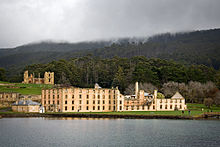
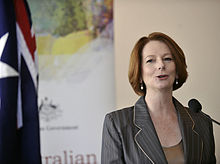
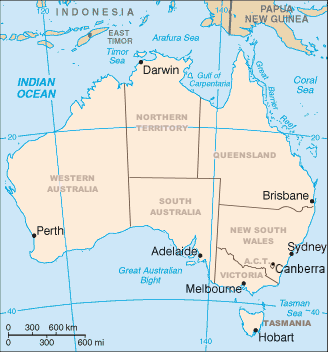



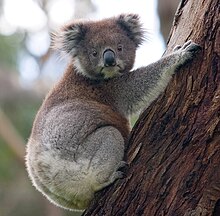








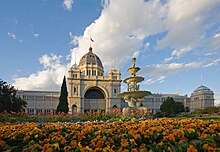




No hay comentarios:
Publicar un comentario